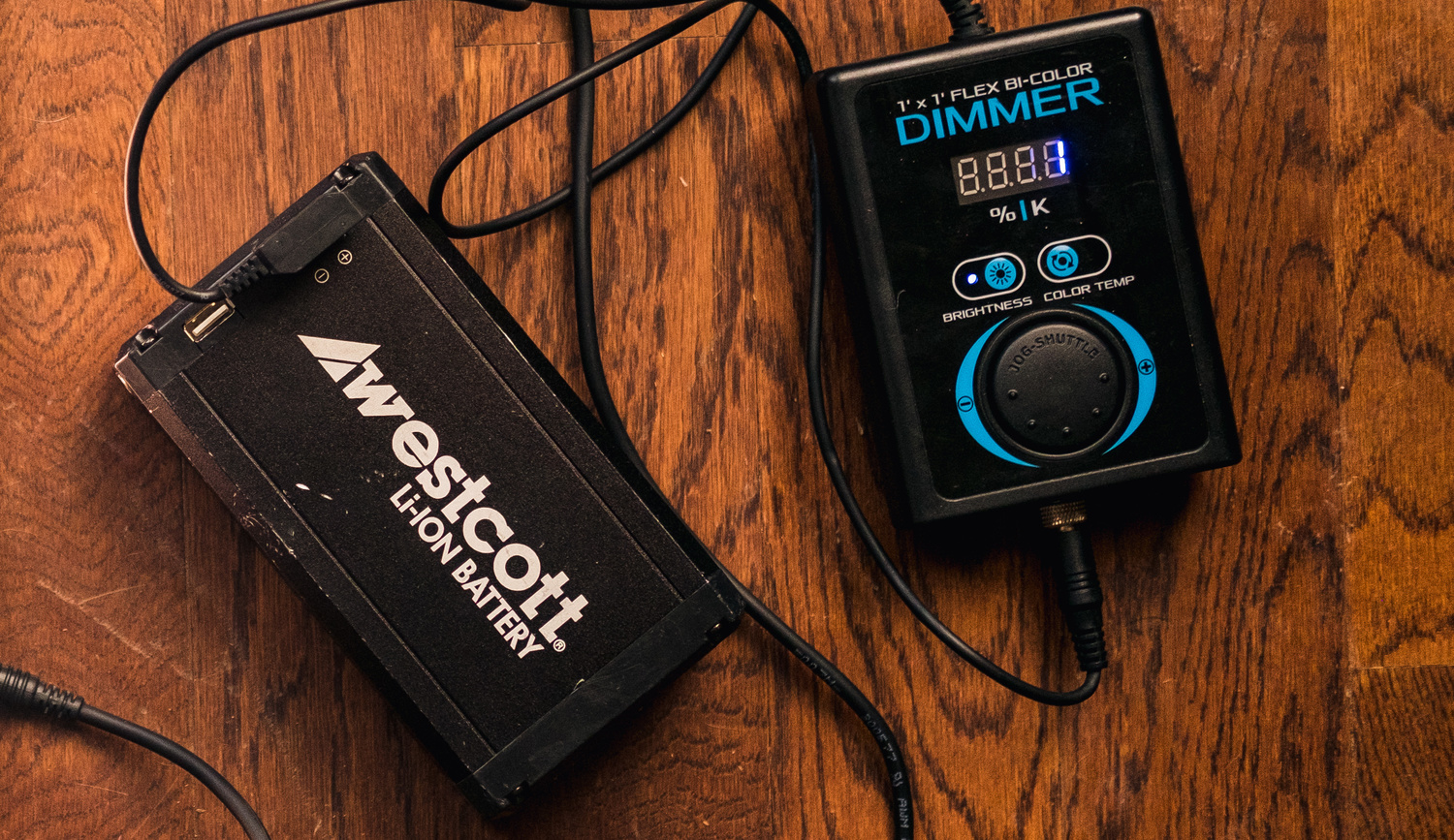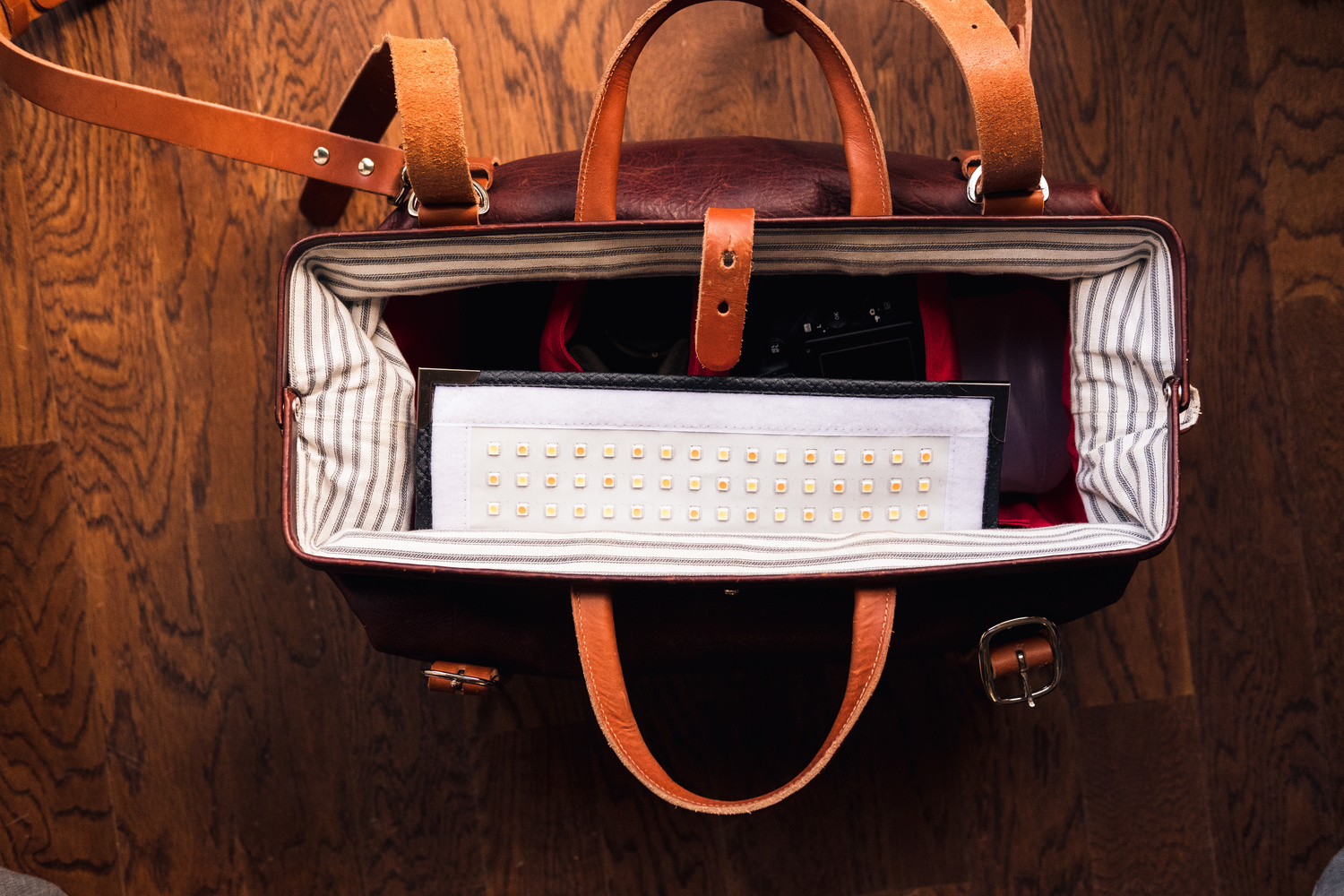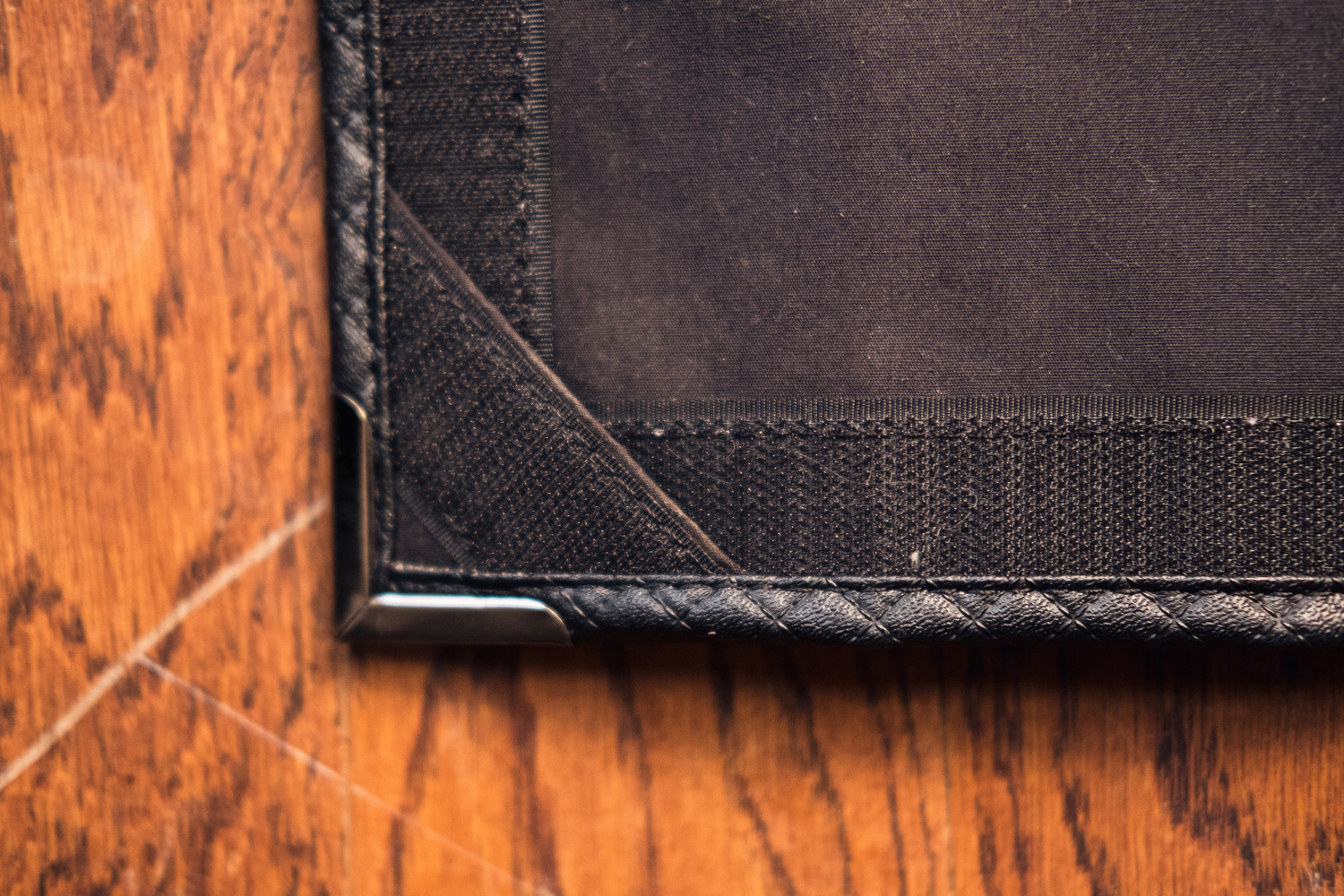Westcott is known for their amazing lighting products. Not only do they have great lighting modifiers and lights, but they are also constantly coming up with new technologies and products that make life as a photographer easier. Their new line of flex lights promises to do just that, but how do they perform in the real world?
Build
The key feature to this light is the ability to bend and mold it to whatever shape you want. This is done by a type of flexible guide wire that’s around the edges of the light that you can bend to fit your desired application. The only limiting factor with this is that you cannot create a hard crease. I’m assuming over time a hard crease would cause some internal wiring to fail, kind of like when you bend a paperclip so much that it breaks.

On the front and back of the light there are Velcro strips. Not only does this allow you to stick the light to itself like in the image above, but it also allows you to stick the light to whatever else you want. These Velcro strips are also what is used to attach the light to the various holders and modifiers that Westcott made specifically for this light. In addition, you could also use some Velcro tape to place this light anywhere you could think of.
In order to control the light, a cable runs from the light to a digital dimmer, then another cable runs from the dimmer to either a battery pack or a power cord that you plug into the wall. The light itself is waterproof and can be left out in the rain, but the dimmer and battery are not waterproof. To solve this problem there is a super long cable that can be used to connect the light to the dimmer instead of using the standard length cable. This allows you to place the light where you need, but keep the dimmer and battery in a safer location. The dimmer is how you turn the light on and off, control the power output (0-100%), and control the color temp (2,800-6,000K).

The biggest issue I have with the entire setup is with the digital dimmer. It works great, but I just don't understand why they made it so large? With the light being super thin and able to fit almost anywhere in a camera bag, it would have been nice to have the switch follow along and be able to be placed in a small pocket. But it’s just too large to go anywhere but the main compartment of a bag unless you want to dedicate an entire pocket to just the dimmer. The battery pack is a little bulky, weighing in at just under three pounds, but gets you just over two and half hours of full power output. I feel like a lot time went into getting the light and battery to be small and compact and then the dimmer was left out.

The Flex light hanging out in my Holdfast Roamographer bag taking up little to no space
In Use
When I first got this light and turned it on, it powered up at 1%. I slowly started spinning the dial to increase the power and was quickly surprised by how bright this little thing was. By the time I got to 100%, it was hard to look directly at the light for too long. In order to test this at an extreme, I set the the light to 100% and held the light just out of frame while I took a quick self portrait in a mirror. At full power, I was able to get my camera set to ISO 200, f2, and 1/4700th of a second. I realize this is an extreme case since the light is basically as close as I can get it, but it’s still pretty dang impressive.

Where this light really shines is when you take it out on location. Because of how lightweight the light is in combination with the way it can bend and flex, I didn't even need a light stand most of the time. I just bent an edge to create a type of lip and hung it from tree limbs, rails, or balconies.

Even at this distance, I only needed the light set to 20% to achieve ISO 3200, f1.4, and 1/100th of second. I could have easily achieved a lower ISO by turning up the power, but I was using some of the ambient light to create some foreground interest.

Taking the light inside and just letting it balance on the back of a chair, you could easily bounce the light off of a wall for a softer look or fill a small room with light. But with such a messy hotel room, I decided to make the wall go to white and get a nice silhouette. ISO 200, f2, 1/250th of a second and the light is still just at 20% power.
What I Like
Portability - This light can easily fit into almost any bag by being placed between existing items or laying flat in places that don't normally hold any gear. The digital dimmer and battery pack can take up some room, but for the same space required to hold a lens, you can fit both items along with the needed cables.
Power output - As seen in the above examples, this light has enough output to provide enough light for most applications. There are also larger models if you need a bit more output.
Flexibility - Being able to mold and shape this light to your hearts content is a huge benefit. Not only does this cut down on what you need to carry by making it possible to not need a light stand, but it also has the added benefit of fitting into locations that would otherwise be impossible to place a light.
What I Don't Like
Price - This is the first time mentioning the actual price in this review, but it is a little on the high end. Coming in at $850 for the Bi-color model and $650 for the daylight version. Throw in another $300 for the battery and you are looking at a decent chunk of change.
Digital dimmer - Like I mentioned above, you can fit the dimmer and battery into the same space that would normally hold a lens, so it's not a huge deal breaker. But it is still somewhat annoying given how small and portable everything else in the kit is.

Conclusion
The Flex lights biggest downfall is the price tag. But I believe what the light has to offer, makes the price something that I can live with. Especially given that other high end bi-color lights are within the same price range, but don't offer some of the key features found on this light. The ability to use the light in otherwise impossible locations is something that I am really looking forward to going forward.











Diy Version can be found Here on youtube. https://www.youtube.com/watch?v=qlMtakaa7u8
Definitely a decent DIY option. I would be curious to see a light output comparison between this and the flex light. The thing that would stop me is this isn't really practical for photography due to the flicker problem mentioned at higher shutter speeds. Plus I'm really looking forward to getting this thing wet in the future since its water resistant!
That video was my first thought as well. While Im sure the Westcott performs better than the DIY version, I can't justify the price.
the lumens on the those and the diy aren't far off, I always tell people to make sure they are buying Korean or Japanese made LED's not the cheap china ones.
As someone who used to do marketing for a LED company I laugh at the price of these things.
Those DIY versions are just as good, give any maker an extra 50 and they'll throw these things together.
God I want one of these so badly, seeing them at B&H blew my mind! That was before they released a battery for it even.
While I'm certainly a DIY guy, these aren't for the person who is willing to build or even put up with a DIY product. These are for the professional that needs a rock-solid reliable product, no matter the cost to production. I've personally worked with a gaffer on a traveling TV show that had a set of these and they worked perfectly, PLUS he was renting them to the production, making his money back while using them.
You think someone on a Hollywood set is going to waste even one of the 10 hours they have left in the day that they aren't working by building something that looks like it belongs back in film school?
Supposedly Aladdin is the original maker and westcott "copied" them, I also heard that the Aladdin version are built way better, again this is what I was told from someone whom recently went to NAB.